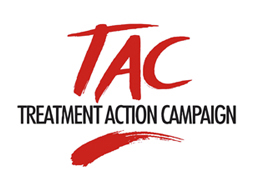Rediscovered activism
But there was little public outcry on education. The people of South Africa recognized that it would take years, if not decades, to undo the damage of apartheid. In fact, progressive political activism in general dissipated in the years immediately following the victory against apartheid, which for decades had defined the country’s political opposition. When that system collapsed and the ANC took office, progressive opposition went into abeyance. At least until ANC policy on the HIV-AIDS epidemic ravaging Africa became clear.
AIDS policy . Compared to its neighbors, South Africa had taken practical steps against AIDS. In 1992, a broad coalition of political parties, trade unions, academics, business organizations and civic groups had created the National AIDS Coordinating Committee of South Africa (NACOSA). [7] The committee produced a national AIDS strategy, which the ANC adopted within months of taking office. [8] The South African health establishment was optimistic that an epidemic on the scale experienced by other African countries could be avoided. [9] “No one could claim that the country did not know what it was facing,” wrote Mary Crewe, a leading researcher on HIV/AIDS in South Africa.
We knew about AIDS—this was not some new unfolding mystery that we were the first to experience. We had a time lag of infection, the oft-repeated 'window of opportunity,' a committed government, an excellent plan and the relative wealth and advanced infrastructure to set our response apart from that of the rest of the continent. [10]
But the government disappointed the public health community. A government-produced AIDS awareness play was widely denounced as counterproductive. Researchers at the University of Pretoria developed an AIDS treatment that the South African Medicines Control Council blocked because the drug, derived from antifreeze, was dangerous. Despite this, after the researchers lobbied Health Minister Nkosazana Dlamini-Zuma, she unsuccessfully pressured the Council’s chair to back the drug. [11] In 1998, Dlamini-Zuma opposed the use of the antiretroviral drug AZT despite a study showing that a short course cut mother-to-child transmission rates by half. ANC-run provincial governments likewise rejected its use.

Opposition arose. December 10, 1998 saw the launch of the Treatment Action Campaign (TAC), dedicated to increasing access to treatment for people with HIV and reducing infection rates. TAC was led by veteran anti-apartheid activist Zackie Achmat, himself HIV-positive. [12] TAC faced an uphill battle. It had expected that international pharmaceutical companies would fight efforts to reduce drug prices. But TAC was dismayed to find the South African government also opposing its goals and initiatives. President Thabo Mbeki and his minister of health, Dr. Manto Tshabalala-Msimang, asserted in 1999 that AZT was dangerous; the administration seemed to dismiss the threat posed by AIDS. [13] The government’s 2000-2005 strategic plan against AIDS did not include a widespread antiretroviral treatment program. What critics dubbed “AIDS denialism” flourished.
On August 21, 2001, TAC filed suit against the minister of health in the High Court, claiming that his failure to make the drug Nevirapine (used to prevent mother-to-child HIV transmission) generally available violated the constitution. TAC won twice in court, in December 2001 and July 2002. [14] When the government still refused to launch a Nevirapine treatment campaign, TAC in February 2003 organized a march on parliament and started a civil disobedience campaign a month later. TAC’s combination of education, protests and litigation paid off: on August 9, 2003, the cabinet approved a universal antiretroviral treatment campaign. [15]
Three years later, Achmat wondered whether the lessons learned from TAC might be applied to the field of education advocacy.
[7] Virginia Van der Vliet, “South Africa Divided against AIDS: A Crisis of Leadership,” in AIDS and South Africa: The Social Expression of a Pandemic (New York: Palgrave Macmillan, 2004), p.51.
[8] Human Rights and AIDS in South Africa: From Right Margin to Left Margin, Mark Heywood and Morna Cornell, Health and Human Rights , Volume 2, Issue 4, 1998.
[9]
Ibid.
[10]
Mary Crewe, “South Africa: Touched by the vengeance of AIDS,”
South African Journal of International Affairs
, Volume 7, Issue 2, 2000.
[11]
History of HIV & AIDS in South Africa, AVERT. See
http://www.avert.org/history-hiv-aids-south-africa.htm
[12]
Achmat became an activist at age 14 during the Soweto uprising and joined the ANC four years later. In 1994, he co-founded the National Coalition for Gay and Lesbian Equality, which worked to include sexual orientation in the constitution's nondiscrimination provisions.
[13]
Virginia Van der Vliet, “South Africa Divided against AIDS: A Crisis of Leadership,” in
AIDS and South Africa: The Social Expression of a Pandemic
(New York: Palgrave Macmillan, 2004), 51.
[14]
Mark Heywood, “Preventing mother-to-child HIV transmission in South Africa: background, strategies and outcomes of the Treatment Action Campaign case against the Minister of Health,”
South African Journal of Human Rights
, Volume 19, 2003.
[15]
A History of Official Government HIV/AIDS Policy in South Africa
, South African History Online. See:
http://www.sahistory.org.za/topic/history-official-government-hivaids-policy-south-africa
. Also Mark Heywood, “South Africa's Treatment Action Campaign: Combining Law and Social Mobilization to Realize the Right to Health,”
Journal of Human Rights Practice
, Volume 1, Issue 1, 2009, pp. 14-36.